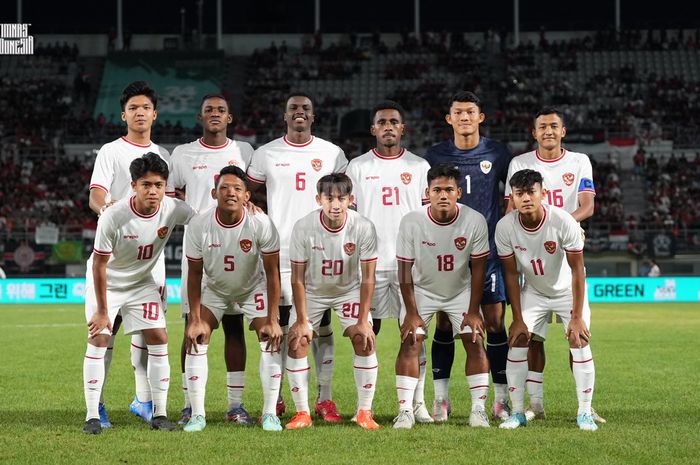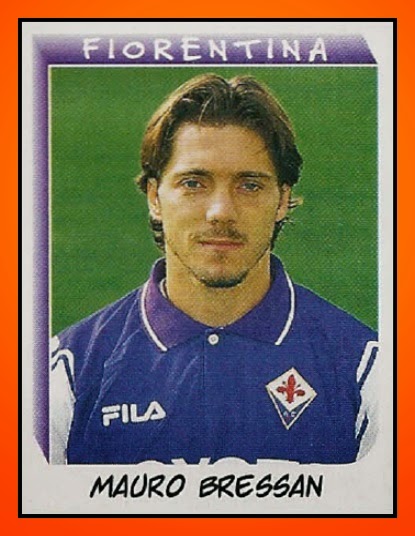
The Evolving Canvas: A Deep Dive into Indonesia U20 Team Formation Under Shin Tae-yong
Indonesia, a nation where football isn’t just a sport but a fervent passion, places immense hope on its youth development programs. At the forefront of this ambition is the U20 national team, often seen as the direct feeder for the senior squad. Under the tutelage of South Korean tactical maestro Shin Tae-yong (STY), the Garuda Nusantara U20 has been undergoing a significant transformation, not just in terms of player quality but, more crucially, in their tactical understanding and formation flexibility. This article will delve into the nuanced updates regarding the Indonesia U20 team’s formation, exploring STY’s evolving philosophy, the key positional roles, and the strategic adaptations aimed at forging a formidable international contender.
Shin Tae-yong’s Vision: Beyond Fixed Formations
Shin Tae-yong’s arrival in Indonesia marked a paradigm shift. Known for his rigorous training methods, emphasis on physical conditioning, and astute tactical awareness, STY has consistently preached the importance of fluidity and adaptability over rigid formations. For the U20 squad, this philosophy is even more pronounced, as it serves as the foundational tactical education for the next generation of Indonesian footballers.
Unlike coaches who might stubbornly stick to a single formation, STY views formations as a dynamic framework, a starting point that can morph and adapt based on the opponent, the game state, and the available player profiles. His core principles revolve around:
- High Pressing and Counter-Pressing: Winning the ball back quickly, often high up the pitch, to stifle opponent build-up and create immediate attacking opportunities.
- Quick Transitions: Moving from defense to attack, and vice versa, with speed and precision.
- Defensive Solidity: Ensuring the team is compact and difficult to break down, regardless of the attacking shape.
- Positional Interchangeability: Encouraging players to understand multiple roles and be comfortable drifting into different areas of the pitch.
These principles underpin whatever formation STY deploys, be it a 4-3-3, a 4-2-3-1, or even a back-three system. The "formation update" for the U20 team, therefore, is less about a radical shift to a brand new static shape, and more about a continuous refinement of how these shapes are used, the personnel filling them, and the tactical instructions within them.
Common Formations and Their Adaptations
STY has primarily experimented with a few key formations for the U20 team, each with specific tactical implications:
-
The 4-3-3 (The Attacking Blueprint): This formation remains a preferred choice for STY, particularly when the team aims to dominate possession and apply high pressure.
- Updates: The traditional 4-3-3 has seen updates in the roles of the wide forwards. They are not merely touchline huggers but are encouraged to cut inside, link up with the central striker, and contribute to midfield pressing. The central midfielder (often the "number 8" or box-to-box player) is given more license to break into the box, adding an extra dimension to the attack. The defensive midfielder (the "number 6") is crucial here, needing exceptional positional awareness, ball recovery skills, and the ability to initiate attacks from deep.
- Personnel Impact: This formation demands highly energetic and versatile wingers, technically proficient central midfielders, and full-backs who can offer width and support in attack.
-
The 4-2-3-1 (The Balanced Approach): This formation offers a more balanced structure, providing defensive solidity through the double pivot while maintaining attacking threat through the attacking midfielder (number 10) and wide players.
- Updates: The double pivot (two defensive midfielders) is key. One might be a more traditional holding midfielder, while the other is a deeper-lying playmaker. This allows for better control of the midfield battle and offers more cover for the defense. The attacking midfielder needs to be highly creative, capable of finding pockets of space between the lines, and linking up play with the striker and wingers. The striker in this system often acts as a target man or a false nine, dropping deep to facilitate play.
- Personnel Impact: This requires intelligent and tactically disciplined central midfielders, a highly skilled number 10, and a striker who is comfortable with both goal-scoring and linking play. It also provides a stronger defensive base for teams facing physically superior opponents.
-
The 3-4-3 or 3-5-2 (The Tactical Surprise): While less frequently used as a primary formation, STY has shown willingness to deploy a back-three system, particularly to counter specific opponent threats or to provide more width and attacking impetus from wing-backs.
- Updates: When opting for a back-three, the central defenders must be comfortable on the ball and capable of initiating attacks. The wing-backs become crucial, needing immense stamina to cover the entire flank – both defensively and offensively. In a 3-4-3, the wide forwards still maintain their attacking roles, while in a 3-5-2, two strikers lead the line, often with one dropping deeper.
- Personnel Impact: This formation is highly demanding on the wing-backs and requires central defenders with good passing range and tactical understanding. It can be a potent weapon if the personnel are suited to the roles, providing numerical superiority in central areas or exploiting wide channels.
Key Positional Updates and Player Profiles
The true "formation update" under STY comes from the specific demands he places on players within these systems, and how he develops them to meet these demands.
-
Goalkeeper: Beyond shot-stopping, the U20 goalkeepers are trained to be "sweeper-keepers" – comfortable coming off their line, excellent with distribution (both short and long), and an integral part of the build-up play from the back. Their decision-making under pressure is paramount.
-
Center-Backs: STY emphasizes center-backs who are not only strong in aerial duels and tackling but also adept at playing out from the back. They need to have good passing range, be comfortable carrying the ball forward, and possess the pace to cover behind a high defensive line. The modern center-back for STY’s U20 must be a ball-playing defender first and foremost.
-
Full-Backs (or Wing-Backs): These are perhaps the most demanding positions. STY requires his full-backs to be "marauding" – constantly overlapping in attack, providing width, and delivering crosses, while also tracking back diligently to perform defensive duties. Stamina, pace, and tactical awareness to know when to push forward and when to hold back are crucial. The ability to defend 1v1 is also heavily drilled.
-
Defensive Midfielder (The Anchor): Whether as a lone pivot or part of a double pivot, this player is the linchpin. They must be exceptional at breaking up play, winning second balls, and shielding the defense. Crucially, they also need excellent vision and passing range to distribute the ball quickly and accurately, initiating attacks. This role demands high tactical intelligence and relentless work rate.
-
Central Midfielders (The Engines): These players are the box-to-box dynamos. They are expected to contribute to both defense and attack, making late runs into the box, supporting the press, and dictating the tempo of the game. They need strong technical skills, tactical discipline, and immense stamina.
-
Attacking Midfielder (The Creator): When a number 10 is deployed, they are the team’s primary creative outlet. They must be able to operate in tight spaces, possess excellent dribbling skills, vision for the final pass, and a keen eye for goal. They also play a vital role in the initial phases of the press, closing down opposing midfielders or defenders.
-
Wingers: Speed, dribbling ability, and the capacity to take on defenders are non-negotiable. STY’s wingers are also expected to be goal threats, cutting inside to shoot or linking up with the striker. Furthermore, their defensive contribution – tracking back and helping the full-backs – is heavily emphasized, turning them into complete wide players.
-
Striker: The central forward role varies depending on the formation. In a 4-3-3, they might be a traditional poacher or a false nine. In a 4-2-3-1, they might be more of a target man for hold-up play. Regardless, STY demands a high work rate, intelligent movement off the ball, and clinical finishing. The ability to press from the front is also crucial.
Training Methodologies and Tactical Periodization
The updates in formation are not merely chalkboard exercises; they are deeply embedded in STY’s training methodologies. He employs tactical periodization, where every training drill is designed with a specific tactical objective in mind, whether it’s pressing triggers, defensive shape, or attacking patterns. The U20 players are constantly drilled in transitioning between defensive and offensive phases, understanding how their individual movements impact the collective team shape.
Small-sided games are used extensively to improve decision-making under pressure and to reinforce tactical concepts in game-like situations. Video analysis sessions are also a regular feature, allowing players to visualize tactical instructions and review their performances, understanding where the formation works and where adjustments are needed.
Challenges and The Road Ahead
Despite the significant strides, the Indonesia U20 team faces ongoing challenges. The physical disparity with top European or South American youth teams remains a hurdle, requiring continued focus on strength and conditioning. Consistency in performance and mental resilience under pressure are also areas of continuous development. Furthermore, the depth of talent, while growing, needs to be expanded to ensure that injuries or dips in form don’t severely impact the team’s tactical coherence.
Looking ahead, the evolution of the Indonesia U20 team’s formation under Shin Tae-yong is a fascinating project. It’s a testament to a long-term vision that prioritizes tactical intelligence, physical prowess, and adaptability. The "formation update" is not a singular event but an ongoing process of refinement, as STY meticulously molds young Indonesian talents into versatile, tactically astute players. The ultimate goal is to build a foundation that not only achieves success at the youth level but also consistently feeds a strong, competitive senior national team capable of challenging on the international stage. The canvas is still being painted, but the strokes of Shin Tae-yong’s tactical genius are undeniably shaping a more dynamic and promising future for Indonesian football.



